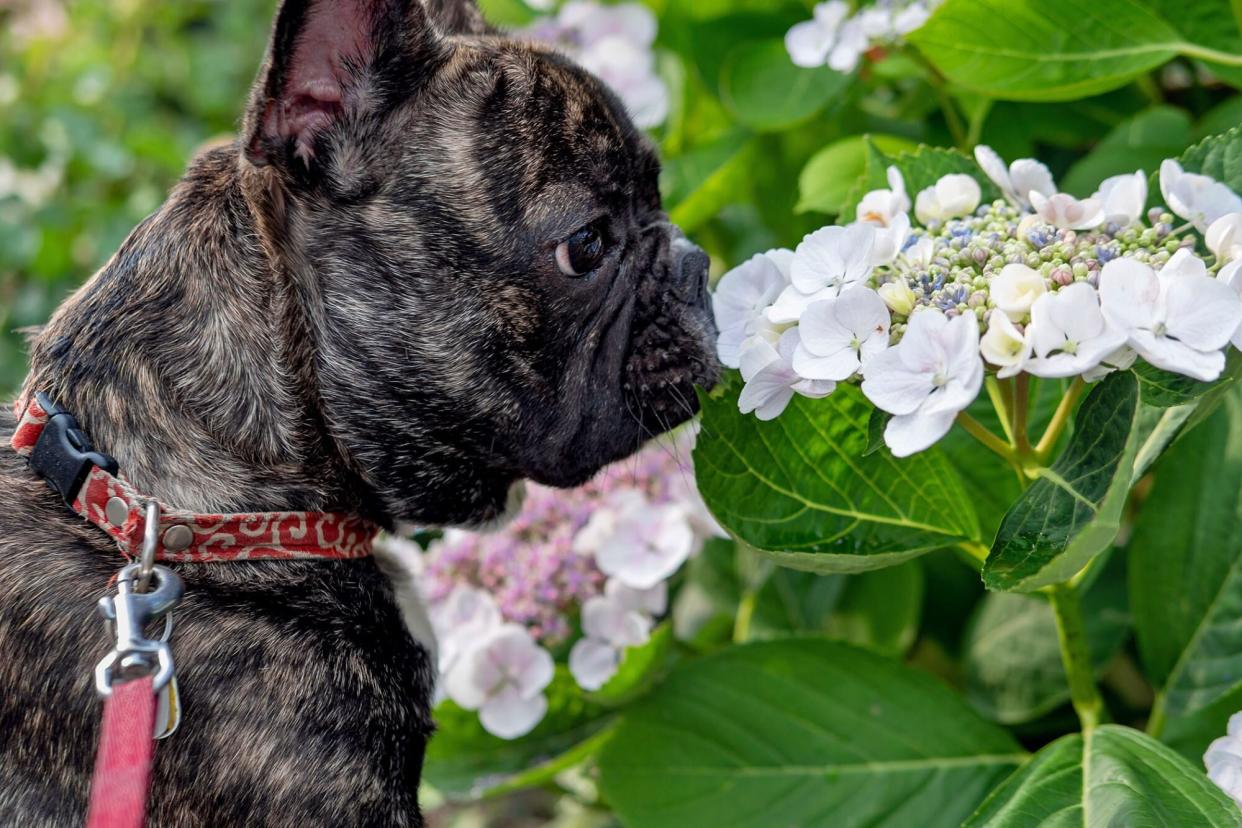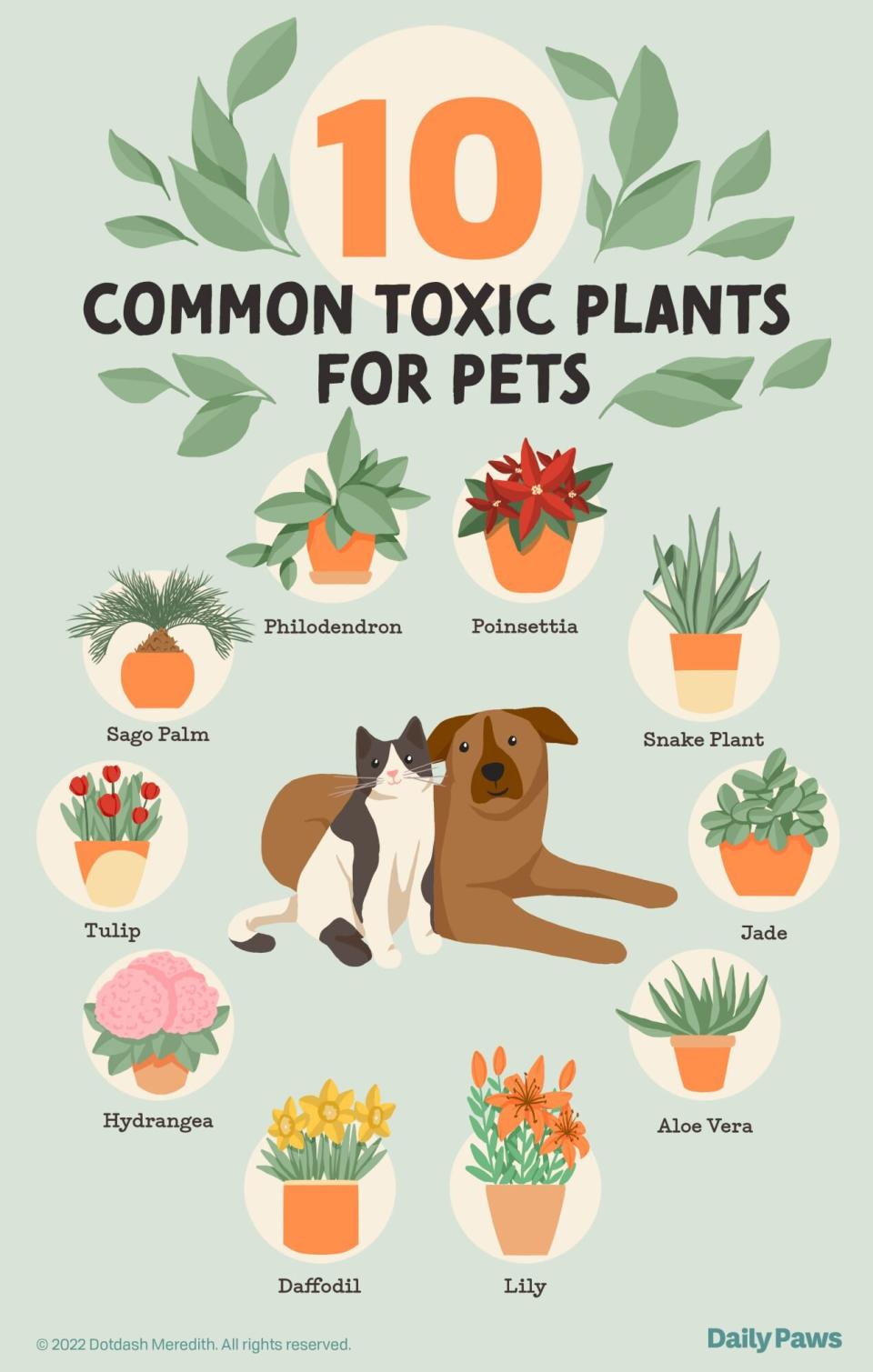Hydrangeas Are Poisonous to Dogs, But Here's How to Keep Your Pooch Safe Around Them

Lee waranyu / Shutterstock
The spring sunshine brings us many beautiful blooms—this is especially true when it comes to hydrangeas! These eye-catching shrubs can appear in pretty pastel shades ranging from red, pink, purple, and blue to green and white depending on the soil pH. (Pretty neat, huh?)
Hydrangeas would undoubtedly make a gorgeous addition to any garden. But as some of us pet parents have come to learn, our inquisitive dogs love to investigate, dig in—and perhaps even eat—our plants. This means we have to choose our plants carefully to make sure our dogs are safe in case they find a way to get to them.
If you're hoping to add some pizzazz to your garden, you might first wonder 'are hydrangeas poisonous to dogs?'
While technically yes, hydrangea poisoning is rare.
Why Are Hydrangeas Poisonous To Dogs?
All parts of hydrangeas (buds, flowers, leaves, stems) are poisonous to dogs, making no part of this plant safe to chew on. But what exactly is it about these stunning shrubs that makes them toxic to our canine companions?
"They [hydrangeas] contain cyanogenic glycosides similar to that found in apple seeds, peach, apricot, plum, and cherry pits," says Renee Schmid, DVM, DABVT, DABT, and Senior Veterinarian Toxicologist at the Pet Poison Helpline.
Although it may be tempting to remove all hydrangeas and anything that resembles them ASAP, there is some good news that might ease your worries and make you reconsider.
"Even though hydrangeas contain cyanogenic glycosides that are toxic to animals, the amount of hydrangea plant material a dog would need to ingest for cyanide poisoning is very large, so poisoning rarely occurs," Schmid says.
Want to keep your hydrangeas or begin to grow them in your garden? Try placing them in the front yard away from your pets or using a gate to fence them off from your furry friend.
Signs of Hydrangeas Poisoning in Dogs
With plants continuously ranking on the ASPCA's top 10 pet toxins list, it's important to know what signs of poisoning to look for if your dog has gotten into hydrangeas.
When it comes to hydrangea poisoning, Schmid says the most typical symptoms are those related to gastrointestinal (GI) irritation.
"Vomiting, lethargy, and diarrhea are most common to see," she says. "If true cyanide poisoning were to occur, signs include: hypotension, brick-red gum coloring, heart rhythm abnormalities, almond-flavored breath, hyperventilation, difficulty breathing, low oxygen levels, cyanosis, ataxia, and tremors/seizures."
What To Do If Your Dog Eats Hydrangeas
Uh-oh! Did you find your dog munching on hydrangeas? Try not to panic. How your dog reacts to eating these plants will depend on how much he ate.
If it's only a few nibbles, Schmid recommends monitoring at home for GI stress (e.g. vomiting, diarrhea, loss of appetite, drooling, lethargy).
"If a large amount, including the stem and leaves were ingested, your pet should be taken to a DVM for decontamination and monitoring," she says. You can also call the Pet Poison Helpline at (855) 764-7661 or the ASPCA Animal Poison Control Center at (888) 426-4435. Both are available 24/7.
Hydrangeas aren't the only toxic plant for dogs out there. Keep an eye out for these other poisonous varieties next time you take your pooch to a friend's house or outside for a walk:

Kailey Whitman
Dog-Safe Alternatives to Hydrangeas
Not sure whether you should keep or remove hydrangeas from your garden?
"I would not necessarily avoid hydrangeas if you have dogs," Schmid says. "If they are constantly digging up and chewing on your plants, then they may be good to avoid."
If Fido's favorite pastime is indeed sniffing and taste testing greenery, consider adding these safe shrub options to your plant family:
Rose
Mulberry bush greenbrier
Black hawthorn
Crimson bottlebrush
Magnolia bush
Chaparral
Want more options? Fortunately, there are dozens of dog-safe plants, shrubs, and trees you can incorporate into your home and garden.

